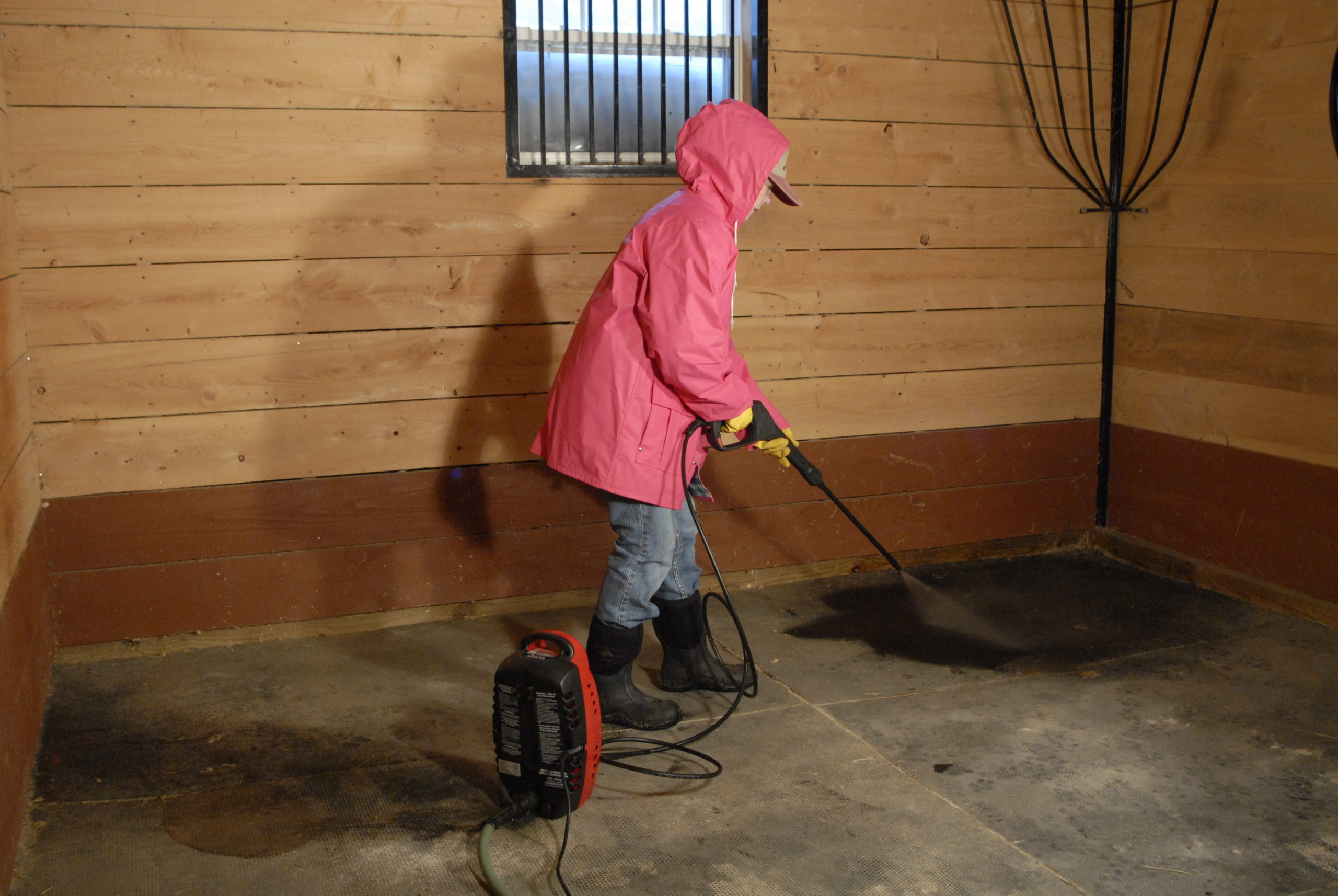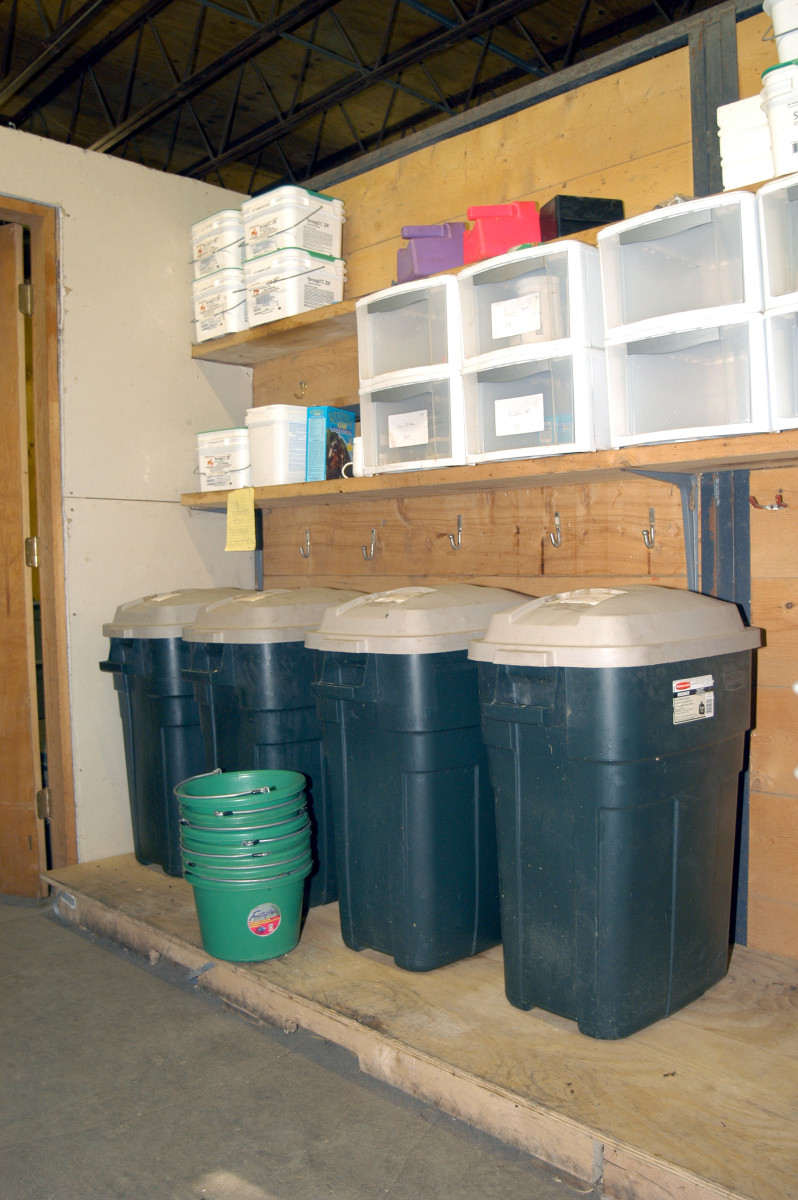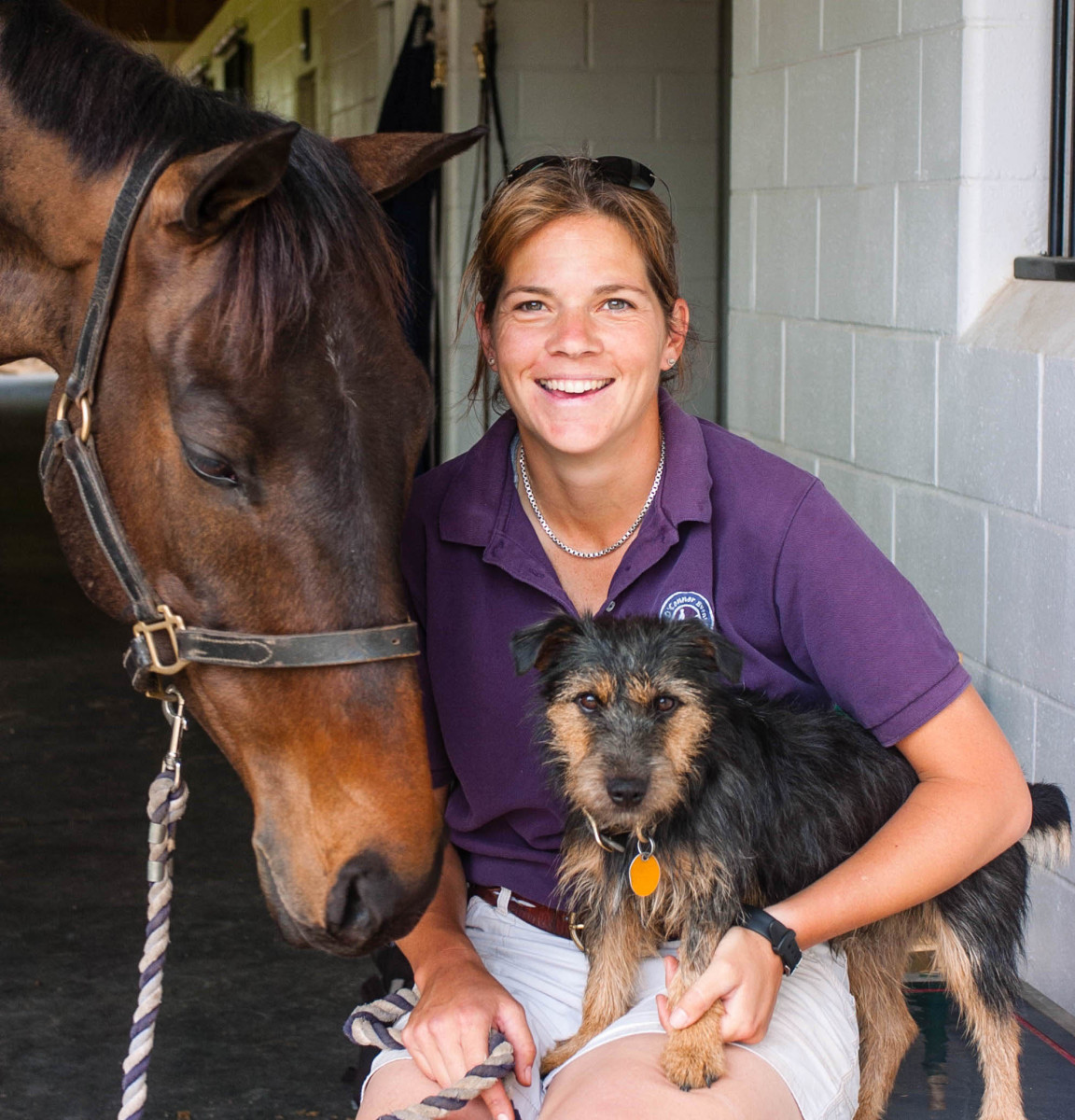Spring is here—and it’s time to regroup and reorganize. If you own or manage a barn, now’s your chance to clean, declutter and get your “fix it later” list under control. Whether you run a small private barn or a large boarding facility, there are enough worthwhile spring-cleaning tasks to fill up at least one weekend. How deep a cleaning you commit yourself to depends on how ambitious you are—and how many chores you put off over the winter. To stay motivated, remind yourself how fabulous the barn will look when you finish the job!
The following to-do list includes items I consider essential for maintaining not only the safety and health of your barn’s horses and riders—but also your sanity and peace of mind.
Tip 1
Lose the layers. Throughout the winter, we’re constantly putting on and taking off layers—both our horses’ and our own. They invariably end up in piles on blanket racks, shelves and trunks and stashed in every other imaginable spot in the barn. There’s nothing worse than pulling out a blanket for a horse in the fall and discovering that it’s filthy or, even worse, in need of repair.
Drag out all the layers you can find and inspect them carefully. Clean and repair them as necessary, then neatly fold and store them out of sight.
This can be relevant to you too! Many jackets get taken off and left in various places as the weather warms up during the day. Suddenly, you have no jackets in your closet—they are all scattered throughout the barn, dusty and covered with dried slobber. This is the time to gather them up, take them home and encourage others at the barn to do the same.
Tip 2
Power-wash the stalls. When it comes to horses’ health, the insides of their stalls are more important than anywhere else in the barn. Remember, they’ve been rubbing their drool and snot or pooping on the walls all year. I recommend power-washing the stall walls once or twice a year. If you don’t own a power-washer, it’s usually easy to find a friend who will lend you one or a local hardware or home improvement store that will rent one. Alternatively, you can scrub the walls by hand with a scrub brush and a bucket of water. This can be tedious, but very therapeutic!
Pick a warm, sunny day when your horses can spend the entire day outside. Remove all the buckets, feed bins and hay nets from the stalls. Sweep the bedding into a pile in the middle of each stall so the floor is bare around the edges. Then power-wash the walls from top to bottom. As you do this, take a good look at the boards, windows, etc., noting anything broken or out of place.
Leave the bedding piled in the middle of the stalls for several hours to allow the walls and floor edges to dry. Power-washers don’t use much water, so if the weather is warm enough, this shouldn’t take long.

Dusty Fern
Tip 3
Freshen up the community areas. Next, power-wash your wash stall and grooming stall. Clear everything out of them first, taking this opportunity to throw away empty shampoo bottles, broken scrapers, funky, crumbly sponges, etc. If your floors underneath the mats are wood, pull the mats up and inspect the boards closely for mold, rot or any signs of weakness in their stability.
If you’re feeling really motivated, power-wash the floors and walls of the barn aisle, and if you have a trailer, this is a great time to check out the flooring under all the rubber mats and power-wash it clean as well.
I also like to scrub all shovels and muck tubs once a week. I fill the tubs with hot water mixed with about a cup of Pine-Sol®, put the shovels in and let them soak for a bit before scrubbing everything. This cleans them up well—and it smells good, too.
Brushes are important to keep clean, especially if they are communally used. An easy way to do this it to put them in the washing machine and run it on the gentle cycle. Throw hoof picks, curry combs and tail brushes in there, too.

Dusty Fern
Tip 4
Scrub buckets. Keeping horses’ water and feed buckets clean is always important. Water buckets should be scrubbed daily, and feed tubs weekly. Even if you routinely rinse them out, take time now to scrub off all of the caked-on saliva, food and grime. Use a good scrub brush, hard-bristled grooming brush or heavy-duty sponge with a scrubby end to scour hard-to-reach corners. Avoid using any type of soap that might be toxic to horses or contain ingredients that could produce positive drug test results. Bleach does a great job, but unless you rinse it thoroughly, it can be toxic to horses. I like to use the all-natural products made by Warhorse Solutions. Another good, safe product is Simple Green®.
Tip 5
Clear the cobwebs. Spiders love to spin webs in barns. Unfortunately, these delicate dust-collectors are a fire hazard. Some barns spot-check for them weekly. A soft, long-handled broom is great for reaching cobwebs up high and in corners. You can tie a rag around the handle end of the broom to access tight spaces. “Sweep” all the corners of the stalls, wash stall, grooming stall, tack room and feed room; spaces between stall-partition bars; upper edges of walls in the aisle; areas around windows and light fixtures; and any other nooks and crannies you can think of. You’d be surprised where you can find cobwebs!
Tip 6
Unclog gutters. Even if you cleared all the leaves and debris out of your barn gutters in the fall, take another good look now. Clogged gutters can lead to serious structural leaks.

Dusty Fern
Tip 7
Declutter the feed room. Throw away empty feed bags and supplement containers, as well as any supplements that nobody has used in three or more months. Reorganize and label everything by product name, horse’s name or boarder’s name—whatever makes the most sense to you. I’m a huge fan of label makers. If you use them as much as I do, you’ll never have to search for anything!
Tip 8
Update your medicine cabinet. Sort through all of your medications and dispose of anything that has expired. (Consult your veterinarian about proper, safe disposal methods.) Then group like items into appropriately sized containers. I always have a variety of sizes of Tupperware®-like containers on hand for this purpose. For example, you can put all of the pastes (bute, Banamine®, etc.) into one container, bottled medications like acepromazine into another container, needles and syringes into another, and so on. Then go crazy with that label maker!
Tip 9
Organize your tack room. Once the competition season is in full swing, you won’t have time to dig through tack trunks for missing items or make multiple trips to the repair shop. Sort through everything now to identify what you’ll need for the season and what you can store out of sight. Check the stitching on every piece of tack and decide what’s due for repair and what’s beyond repair. Donate any unneeded tack or equipment to your local therapeutic riding center, rescue organization or Pony Club. There is always someone in need.
Tip 10

Amy K. Dragoo
Pretty up the place with flowers. Growing up in New England, I learned to appreciate the joy that spring flowers bring after a long, cold winter. Flowers make everyone smile! Whatever colors or types of containers you choose—planters, pots, hanging baskets, etc.—they are guaranteed to improve your barn’s appearance. If you don’t have a green thumb, you might have better luck with hardier plants, like ferns. Just be sure to place any flowers or greenery in locations around the exterior where you know they won’t tempt horses to nibble on them.
Most importantly, check that any plants you place on your property are not toxic to horses. Holly berries, for example, are cheerily decorative, but also poisonous if ingested. Consult your county cooperative extension service or nearby state land-grant universities for information about toxic plants common in your region.
You may love the look of flowers around your barn so much that you’ll consider starting a new seasonal tradition of planting bulbs in the fall. That way, you can look forward to their happy arrival next spring!
About Max Corcoran

Amy K. Dragoo
Max Corcoran worked for Olympic eventer Bobby Costello and Advanced rider Jim Stamets before serving as Karen O’Connor’s groom for 11 years, traveling with her to two Olympic Games, two World Championships, two Pan American Games and countless international events. She went on to help organize events like the Middleburg Horse Trials, Great Meadow International and the Eventing Prix Invitational, and teach clinics for the U.S. Eventing Association and USEF’s Developing Rider programs. She is the former USEA President and current co-chair of the USEA Grooms Committee.
This article originally appeared in the Spring 2021 issue of Practical Horseman.










